Heirloom Seeds Give Us Resiliency
There is a lot of talk, writing and thought about self-sufficiency now, mainly due to the partial economic and industrial collapse that we’ve all watched in the past year or so. The thought of being dependent on no one else is appealing, at least in the short run. This is short term thinking, however, without the realization that humanity has not been completely self-sufficient for 15,000 years, if ever. We were, possibly, self-sufficient when we were hunter-gatherers, but not really even then, as groups of people would trade and help each other.
The progression goes from dependence, to independence to interdependence. At one point we were interdependent with communities mostly supporting themselves, with some goods and services coming from outside. We have since regressed to dependence in just about everything- water in most cities, food, clothing, supplies for housing and just about any other goods we use.
What, exactly, is produced in your town or city?
This brings us to the present self-sufficiency dilemma.
Here is an alternative- resiliency and resilience thinking. This takes into account the many variables that have been stumbling blocks for many- from industries down to family gardeners. For example, the home gardener that finds a few bugs and a disease have pretty much wiped out their tomatoes. They are surprised at this downturn, thinking it abnormal.
In fact, you will be hard pressed to read anywhere that the diseases, pests and other challenges in gardening are anything other than something to be managed and minimized, as if they aren’t entirely normal events! Resilience thinking plans for these events in several ways, so that there is no surprise at loss, only at gain. What a radical concept! This is something that has been taught in several range management and natural resource management courses for a number of years now. This concept works extremely well in environments that have definite, finite limits and resources, similar to the home gardener and small grower.
Resilience thinking acknowledges that ecological systems are very dynamic, experiencing storms, pests, diseases, flooding and droughts. These are not surprise events, but normal and natural over time. These are also not always on a global scale, but often very local patterns. The optimal growing conditions one year are sometimes completely different the next.
This way of thinking is definitely not new, yet has been overlooked in the commercial production of food and goods where profit and continued growth are the main driving forces.
Using diversity in our gardening to overcome the losses of one or more varieties is only one example. Bio-intensive gardening, companion planting and square foot gardening are more ways that adapt to the changing conditions while working to produce viable amounts of food. Building the health and abundance of the soil is one of the most critically important, as everything literally follows the health of the soil. It stands to reason- if the soil is full of minerals and nutrients available to the plants, supported by the active living communities in the different layers of the soil, then the plants will take up the full spectrum of nutrients and minerals to produce the best fruits and vegetables possible. If, on the other hand, there are no living communities due to chemical applications of fertilizers, pesticides and herbicides, and there are only 8 to 10 minerals available, that is what the plant will take up.
The results are easy to see- we all love the supermarket tomatoes, don’t we? Have you ever stopped and thought about why the common backyard, hybrid tomato tastes so good compared to the supermarket one? You have the answer now- the health of the soil they were grown in.
Variety or diversity of species is one of the key elements in resilience thinking, by the simple expedient that the more types or varieties of a species there are, the more likely that a significant portion of the population will make it through whatever challenge appears, from pests to disease to weather. This is why there are so many different types of heirlooms, as each one offers different benefits to changing conditions. This gives you the ability to choose, instead of being forced to rely on a small number of varieties to perform in multiple growing conditions, as hybrids do.
Having 6 or 7 types of tomatoes planted, interspersed with lettuce, carrots, garlic and nasturtiums will give you a much better chance of a good crop than a row of only 1 type of tomato with nothing else in the row. Not to mention all of the other produce that you will get, in addition to the tomatoes! This is a bonus on bonus situation. Even if there is a loss of a couple types of tomatoes from pests, disease or weather, there will be enough other production to provide a good harvest. No one goes hungry!
This is also greatly applicable to the soil. If the soil has healthy communities of multiple organisms in many layers of the soil, there will be plenty of nutrients for both the soil dwellers and the plants, so everyone benefits. Diversity of the soil communities works the same way, the ability to respond positively to a change or challenge without major losses.
Of course we benefit from the healthy plants and their production, so it is in our best interest to build and grow the soil, the garden and the plants to their most resilient stage that we can. We gain the benefits of longer, better harvests that are more tasty and nutritious, which increases our health and our resiliency to outside events. We are more easily able to support ourselves and our communities with fresh and healthy food.

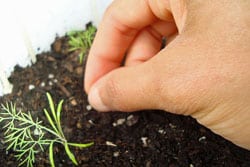
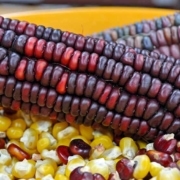 © 2024 Terroir Seeds | Underwood Gardens
© 2024 Terroir Seeds | Underwood Gardens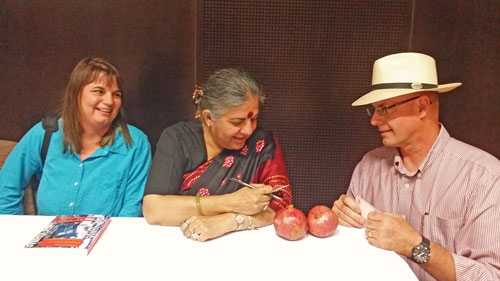



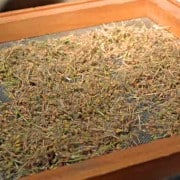
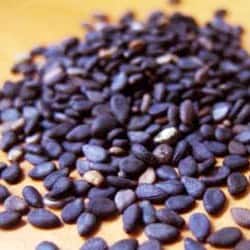
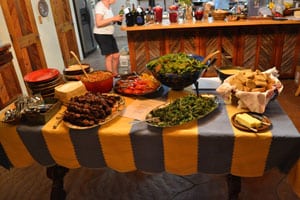
Please continue with this discussion! This reminds me of the way my Dad used to garden over 50 years ago. (He was an organic gardener before the term was commonly used.) My husband is recently retired and we are looking forward to gardening again this summer, so I’m trying to re-learn as much as I can.
Chrys-
Thank you! We find it amazing the amount of simple, proven, workable growing knowledge that has been lost in the past 50-75 years. We are working hard to find and bring back some of this knowledge and share it with everyone who will listen! Please contribute what you know…
Check the used book stores and thrift shops for the old Rodale Organic Gardening Books. There is a LOT of good knowledge out there. Lots of us have never lost it, but the books can help with unusual problems or changes in your environment.
That is something that we always check when we’re out, as the used bookstores are a great resource, and a great value as well.
I like the idea of “resiliency thinking” and I believe it should be applied to the industrial world as well – the industrial world doesn’t want to believe it, but it’s also subject to the laws of nature. Best for us all just to recognize this.
As a former “self-sufficiency” person, I discovered long ago that there is no such thing. We all depend on other beings, not just human beings.
I’m happy to see a discussion of soils; more people need to be aware of how much difference soil nutrition makes. And I totally agree with looking at older ideas and bringing them forward again; I read a lot of older gardening books, not just the Rodale ones but the pre-electricity pre-agribusiness ones from 100 years ago and more. Many good ideas that don’t require expensive equipment.